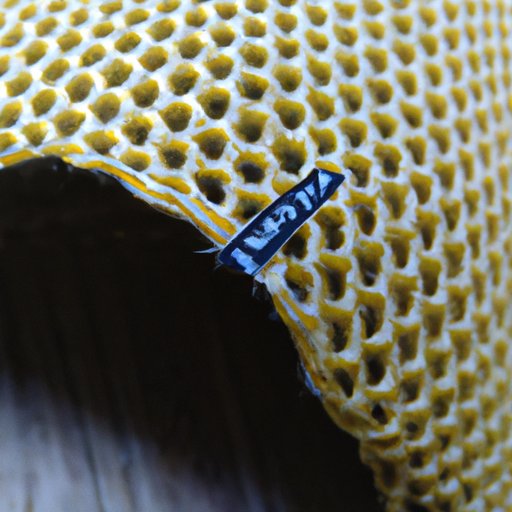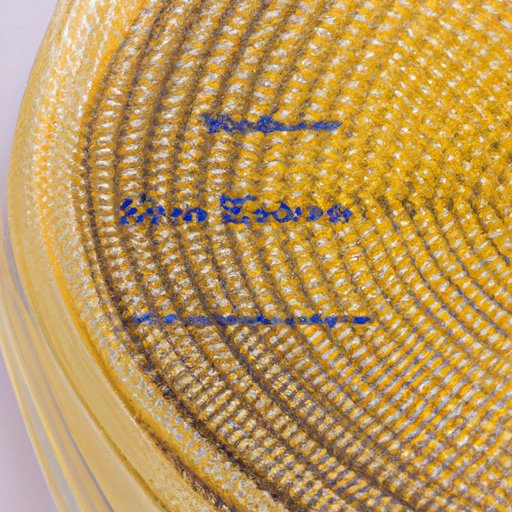Introduction
Kevlar is a synthetic fiber that has revolutionized many industries since its invention in 1965. It is lightweight yet strong, fire-resistant and durable, making it ideal for applications ranging from military and industrial use to consumer products such as clothing and accessories. But who invented Kevlar? This article explores the life and legacy of Stephanie Kwolek, the chemist and inventor of Kevlar.
Biographical Sketch of Stephanie Kwolek, Inventor of Kevlar
Stephanie Kwolek was born on July 31, 1923 in New Kensington, Pennsylvania. She was the daughter of Polish immigrants, and her parents instilled in her a strong work ethic and a passion for science. She graduated magna cum laude from Margaret Morrison Carnegie College of Carnegie Mellon University in 1946 with a bachelor’s degree in chemistry, and went on to complete a master’s degree in physical organic chemistry from the same university in 1950.
Kwolek began her career at DuPont in 1950, where she worked as a research chemist. During her time at DuPont, she made significant discoveries in polymer chemistry, and developed several new synthetic fibers. However, it was her discovery of Kevlar in 1965 that would make her name known around the world.
Kwolek was experimenting with polymers when she discovered a liquid crystal polymer solution. She recognized its potential strength and submitted her findings to her superior, who approved further investigation into the fiber. After two years of testing and development, the first Kevlar product was introduced in 1971. The rest, as they say, is history.
Kwolek retired from DuPont in 1986, but her work continued to be recognized throughout her lifetime. She received numerous awards and honors, including the National Medal of Technology from President Clinton in 1996, and the Perkin Medal from the Society of Chemical Industry in 1997. Kwolek passed away in 2014, leaving behind a legacy of innovation and inspiration.

Timeline of the Development and Evolution of Kevlar
Kevlar has come a long way since it was first invented by Stephanie Kwolek in 1965. Here is a timeline of the major milestones in the development and evolution of this revolutionary material.
1965: Stephanie Kwolek discovers Kevlar while working as a research chemist at DuPont.
1971: The first Kevlar product is introduced.
1973: The first bulletproof vest is made using Kevlar.
1980s: Kevlar is used in the construction of aircraft and spacecraft.
1990s: Kevlar is used in the production of tires and other automotive components.
2000s: Kevlar is used in the production of ropes, cables, and other industrial products.
2010s: Kevlar is used in the production of protective clothing, helmets, and other consumer products.
A Look at the Science Behind Kevlar
Kevlar is a synthetic aromatic polyamide (aramid) fiber. It is composed of long chain molecules that are arranged in a unique crystalline structure. This structure gives Kevlar its incredible strength and durability, as well as its resistance to heat, abrasion, and chemicals.
Kevlar has a tensile strength of up to 8 times that of steel, yet it is much lighter in weight. Its high strength-to-weight ratio makes it ideal for applications that require lightweight yet strong materials. In addition, Kevlar is flame-resistant, with a melting point of 482°F (250°C).
Kevlar works by dissipating energy through the molecular chains of its fibers. When an external force is applied to Kevlar, the molecules move and vibrate, absorbing and dispersing the energy. This process prevents the material from breaking or tearing, allowing it to withstand extreme forces.
Kevlar: An Overview of Its Uses
Kevlar is used in a variety of applications, ranging from military and industrial use to consumer products. Here is an overview of some of the most common uses of Kevlar.
Military Applications
Kevlar is used in the production of body armor, helmets, and other protective equipment for military personnel. It is also used in the production of military vehicles, ships, and aircraft, as well as in the construction of bulletproof vests and other ballistic protection.
Motorcycle Armor
Kevlar is often used in the production of motorcycle armor, such as jackets, pants, and boots. This armor is designed to protect riders from impacts and abrasions in the event of an accident.
Industrial Uses
Kevlar is used in a variety of industrial applications, including the production of ropes, cables, and hoses. It is also used in the production of conveyor belts, gaskets, and seals.

The Impact of Kevlar on the World
Kevlar has had a profound impact on the world since its invention. Here are just a few of the ways in which Kevlar has changed the world.
Improved Safety
Kevlar has improved safety in countless ways. Its use in the production of body armor and ballistic protection has saved countless lives, and its use in the production of helmets and other protective gear has reduced the severity of injuries in sports and other activities.
Environmental Benefits
Kevlar has also had a positive impact on the environment. Its use in the production of tires has allowed for lighter, more fuel-efficient vehicles, reducing emissions and improving air quality. It is also biodegradable, making it a sustainable choice for many applications.
Economic Impact
Kevlar has had a positive economic impact as well. Its use in the production of tires has helped reduce costs for automakers, and its use in the production of consumer products has created jobs and generated revenue for businesses around the world.
A Comparison of Kevlar To Other Synthetic Fibers
Kevlar is not the only synthetic fiber available. Here is a brief comparison of Kevlar to other popular synthetic fibers.
Nylon
Nylon is a synthetic polymer that is often used in the production of fabrics, ropes, and other items. It is lightweight and strong, but not as strong as Kevlar. Nylon is also less heat-resistant than Kevlar, and is not as resistant to abrasion and chemicals.
Polyester
Polyester is a synthetic material that is often used in the production of clothing, furniture, and other items. It is lightweight and strong, but not as strong as Kevlar. Polyester is also not as heat-resistant or as resistant to abrasion and chemicals as Kevlar.
Aramid Fibers
Aramid fibers are a type of synthetic fiber that is similar to Kevlar in terms of strength and durability. However, aramid fibers are not as heat-resistant as Kevlar, and are more prone to degradation over time.

Exploring the History of Kevlar in Popular Culture
Kevlar has been featured in various films, television shows, video games, and songs over the years. Here are a few examples of its appearances in popular culture.
Film Appearances
Kevlar has appeared in many action films, such as Die Hard, Lethal Weapon, and RoboCop. It has also been featured in sci-fi films such as The Matrix and Star Trek.
Video Games
Kevlar has appeared in numerous video games, such as Call of Duty, Halo, and Grand Theft Auto. It is often featured as a form of body armor or protective clothing.
Music References
Kevlar has been referenced in a number of songs, including Jay-Z’s “99 Problems,” Kanye West’s “Power,” and Eminem’s “Stan.” These references often speak to the strength and durability of the material.
Conclusion
Kevlar is a revolutionary material that has changed the world since its invention by Stephanie Kwolek in 1965. It is lightweight yet strong, fire-resistant and durable, making it ideal for a wide range of applications. From military and industrial use to consumer products such as clothing and accessories, Kevlar has improved safety, reduced environmental impact, and had a positive economic impact on the world. It is clear that the legacy of Stephanie Kwolek and her invention of Kevlar will continue to live on for many years to come.
(Note: Is this article not meeting your expectations? Do you have knowledge or insights to share? Unlock new opportunities and expand your reach by joining our authors team. Click Registration to join us and share your expertise with our readers.)
